Your kid’s closet is a chaotic Narnia, but without the charming faun? Let’s fix that. With a few smart tweaks, you can turn the avalanche of socks, costumes, and mystery slime into something that actually works—and keeps working. Bonus: your mornings get faster, and your kid gets more independent. Yes, it’s possible.
1. Build a Low-High System That Grows With Them

Kids won’t use what they can’t reach. Set up two hanging zones: a low rod for everyday clothes and a higher rod for dressy or seasonal items. As they grow, you can move the lower rod up or convert it to shelves.
How to set it up
- Tension rods or an adjustable double-rod organizer make this easy.
- Keep daily outfits on the lower rod, backups and extras up top.
- Use the highest shelf for things you control: holiday wear, keepsakes, or extra bedding.
FYI: This instantly cuts the “Mom, where’s my hoodie?” questions in half.
2. Use Uniform Hangers (And Slim Ones, Please)
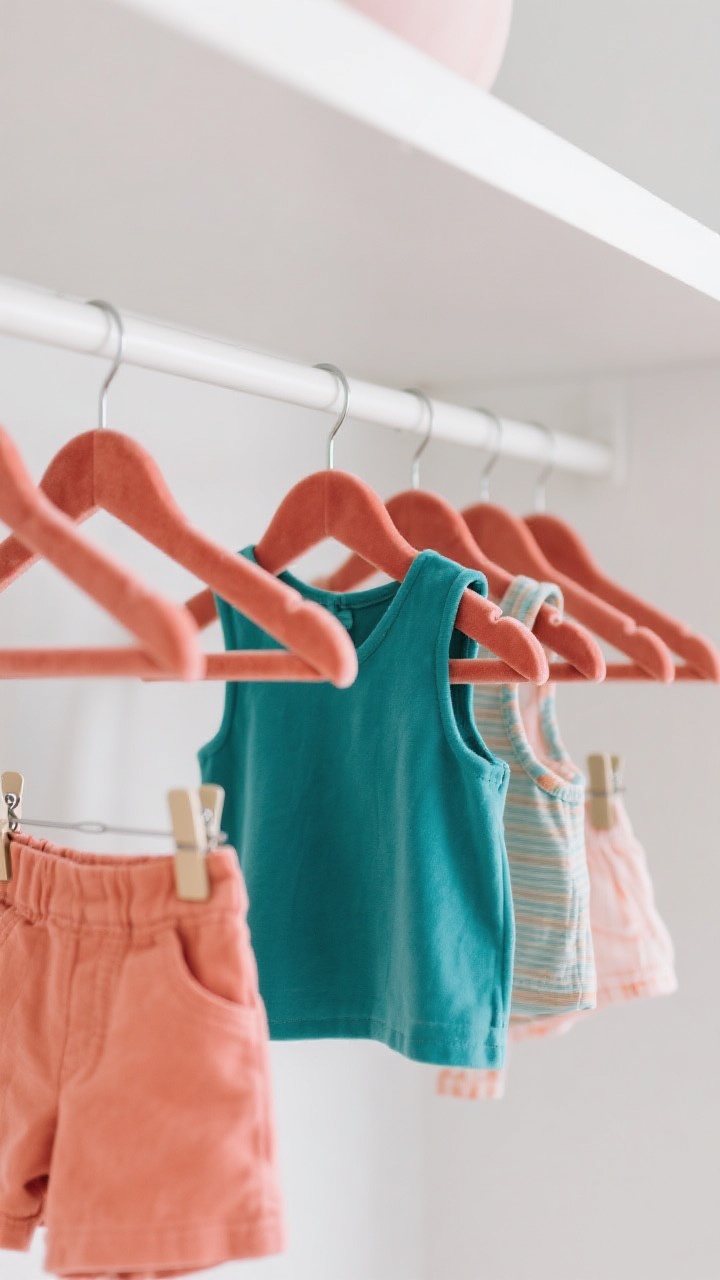
Random hangers make closets look messy and waste space. Switch to slim, velvet kids’ hangers so clothes don’t slip and everything hangs at the same height. It’s an instant visual upgrade.
- Choose one color per kid (or per category) for a quick visual cue.
- Keep a small stash of clip hangers for skirts, shorts, and sets.
- Hang outfits together on a single hanger to speed up mornings.
Bonus: Slim hangers can add up to 30% more hanging space. Small change, big payoff.
3. Divide the Closet Into Zones (Like a Mini Store)
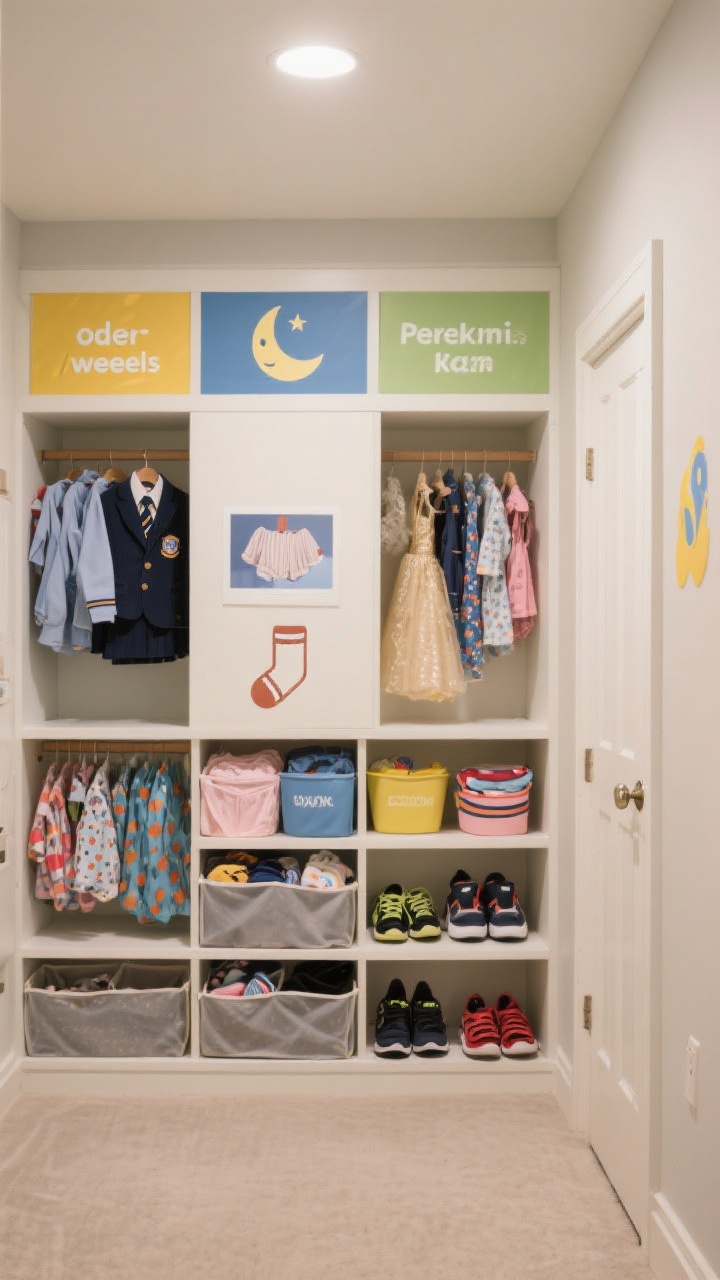
Kids love structure they can see. Create clearly labeled zones so they learn where things live—and where to put them back. Think: tops, bottoms, play clothes, sports, pajamas, and “tomorrow.”
Easy zone ideas
- Top left: school uniform or weekly outfits.
- Top right: special occasion pieces.
- Low shelves or bins: pajamas, underwear, socks.
- Door or floor: shoes and sports gear.
Make it fun with picture labels for pre-readers and word labels for older kids. It’s organization disguised as independence training.
4. File-Fold in Bins, Not Piles on Shelves
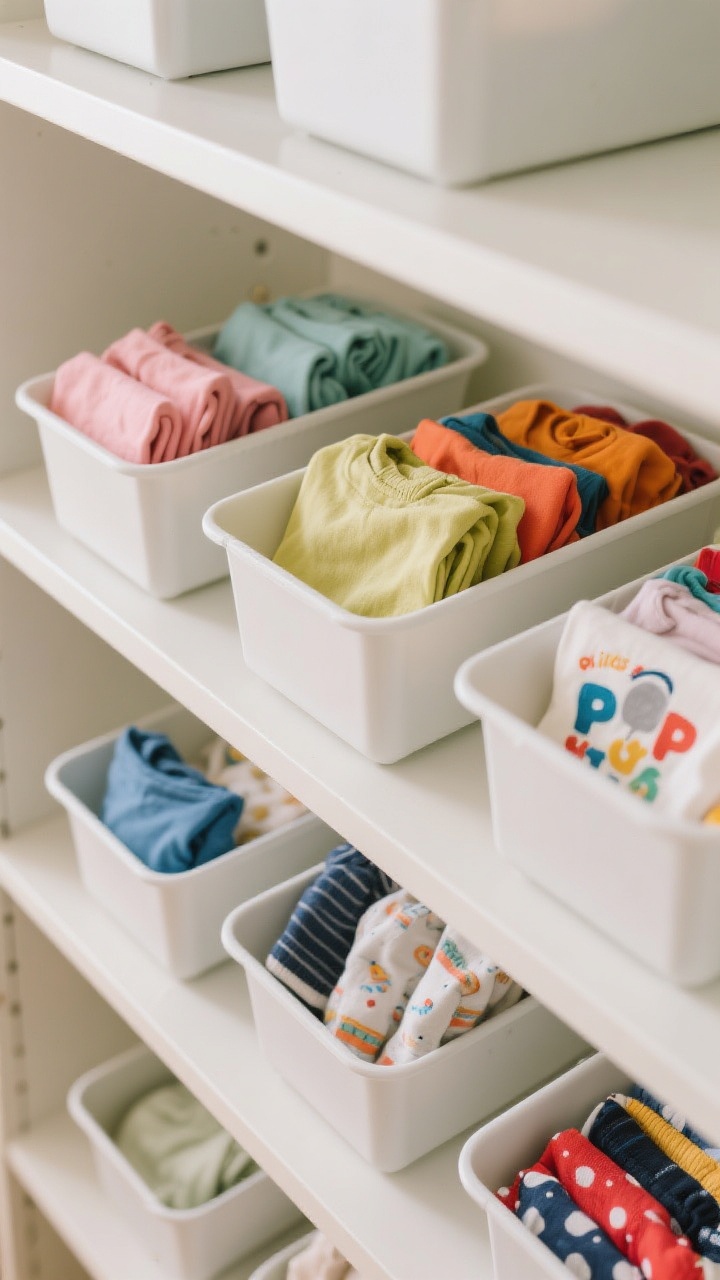
Stacked shirts topple the second you grab one. Switch to file-folding in open bins so kids can see every piece at a glance. You’ll keep the closet tidy and your sanity intact.
- Use shallow bins or drawer dividers for T-shirts, leggings, shorts, and PJs.
- Stand items upright, like files, and color-block for instant scanning.
- Pick sturdy, lightweight bins kids can pull out themselves.
IMO, file-folding is the difference between “dump-and-run” and “I can find my favorite dinosaur shirt.”
5. Designate a Weekly Outfit Planner
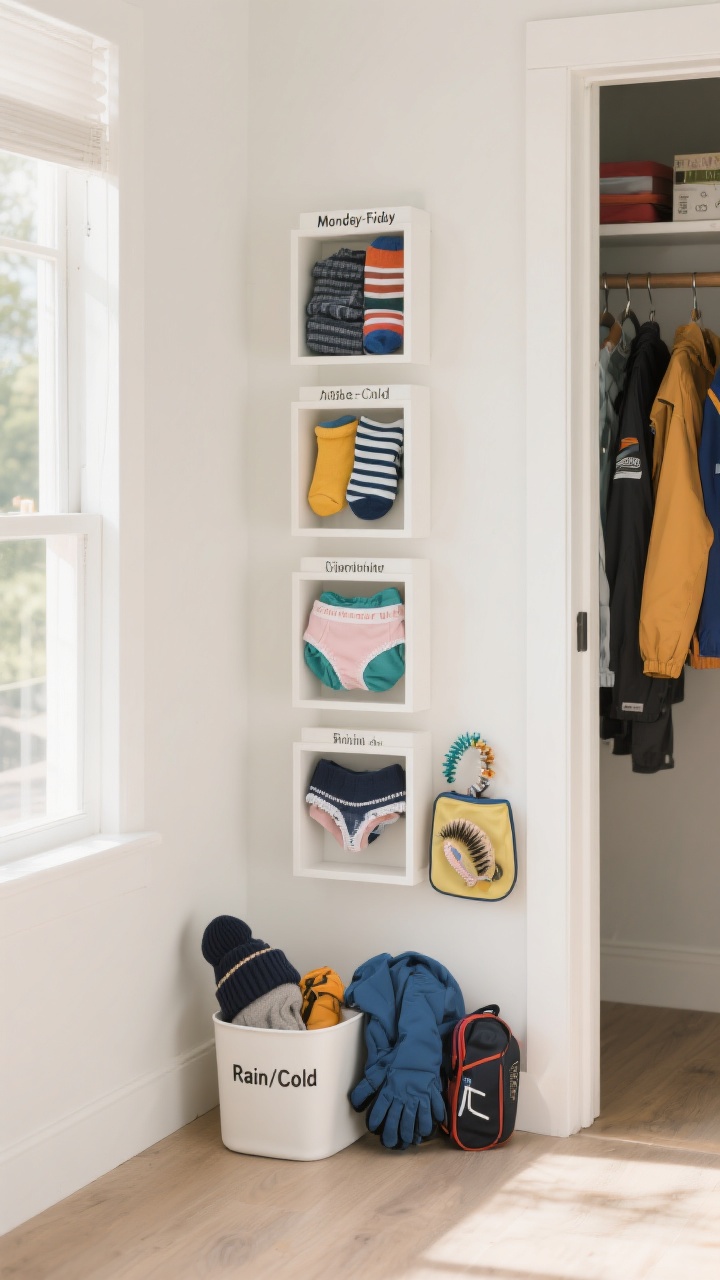
You know those mornings that turn into fashion debates? End them. Create a weekly outfit station with five labeled bins or hanging shelves: Monday through Friday.
What to include
- Outfit + socks + underwear in each slot.
- Add hair accessories or sports gear on the day they need it.
- Keep a “Rain/Cold” bin nearby with hats, gloves, or rain jackets.
Sunday night prep = five calm mornings. You’re welcome.
6. Go Vertical With Door and Wall Space
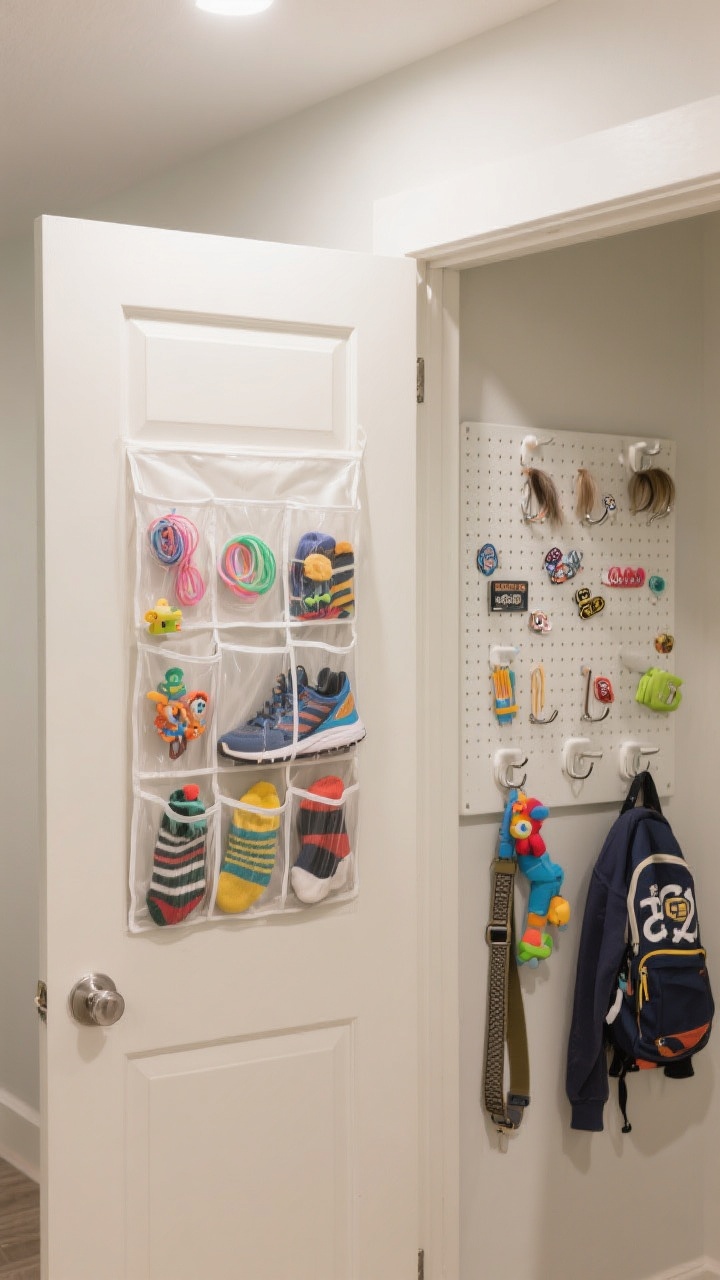
Closet doors are prime real estate. Use them. Over-the-door organizers and wall hooks turn blank space into storage that actually works for kids.
- Over-the-door shoe organizers for shoes, socks, hair stuff, tiny toys, and accessories.
- Command hooks at kid height for backpacks, belts, and hoodies.
- Magnetic strips or pegboards for hair clips, pins, and tiny sports badges.
Keep high-traffic items on the door and free the floor from the shoe avalanche.
7. Use Clear Bins and Picture Labels
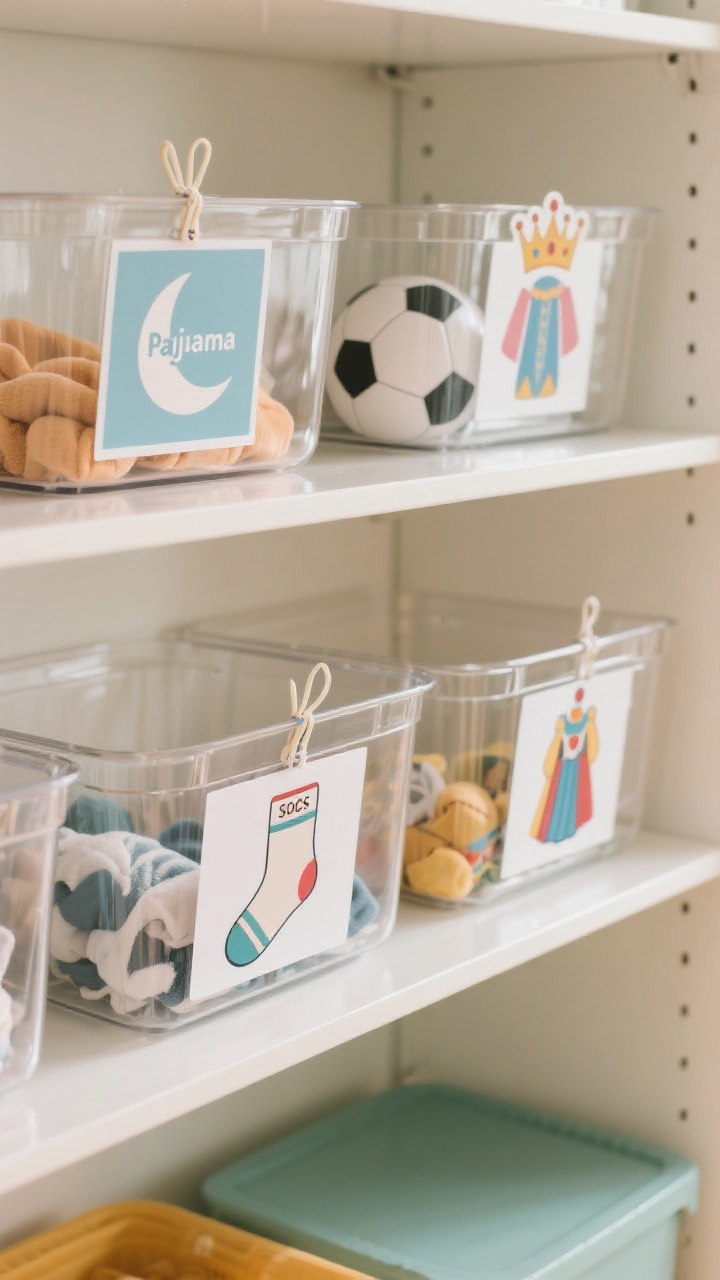
If kids can’t see it, it doesn’t exist. Use clear bins and picture labels so even toddlers can put things away. It’s the hack that turns chaos into a system they can (mostly) follow.
Label ideas
- Pajamas with a moon icon.
- Socks with a sock icon (obviously).
- Sports with a ball icon.
- Costumes with a crown or cape image.
Pro tip: Laminate labels and use zip ties or adhesive pockets so they survive “enthusiastic” helpers.
8. Install Pull-Out Baskets for the Bottom Half
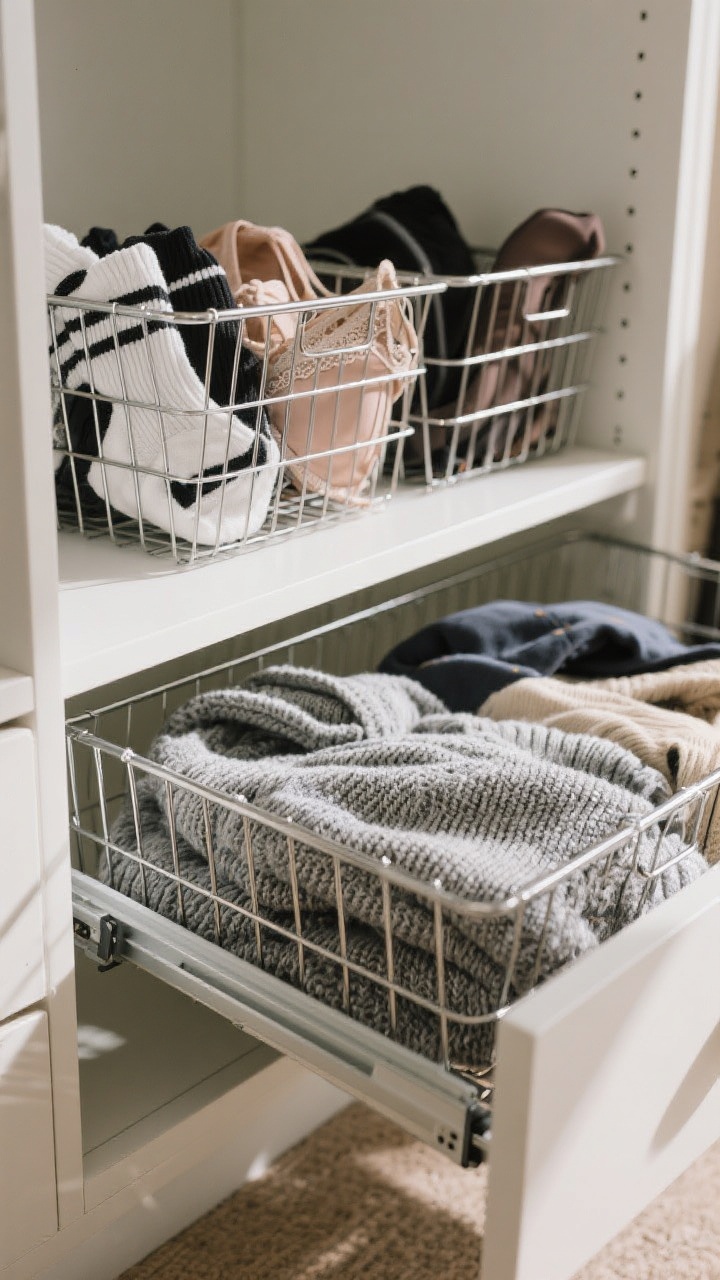
Deep shelves become black holes. Swap them for pull-out wire baskets or drawers. Kids can slide them out, see everything, and—magic—put things back without a fight.
- Use shallow baskets for smalls (socks, underwear, tights).
- Use deeper baskets for bulky items (sweaters, hoodies).
- Add soft-close runners if you’re building into a system. Your fingers will thank you.
Wire baskets also let you see when laundry categories are running low. Helpful for the “do we have clean socks?” panic.
9. Create a Seasonal Swap and Size-Up System
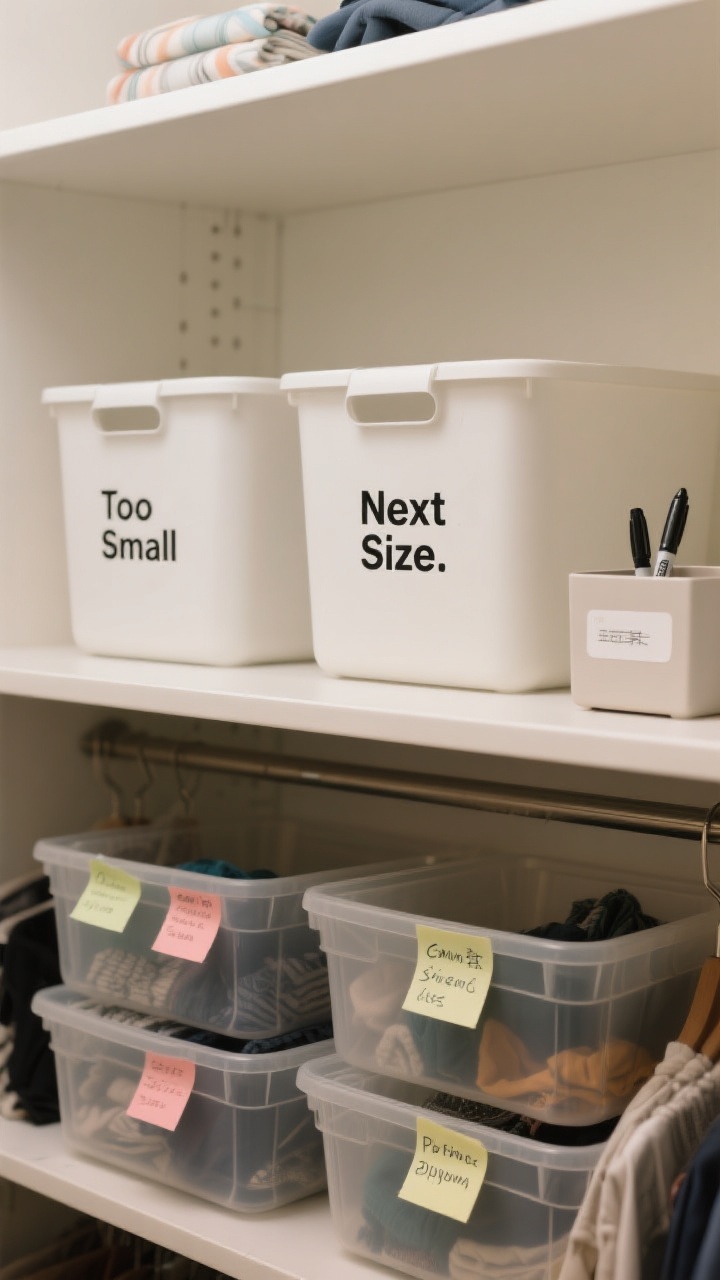
Kids grow like weeds. Keep a two-bin rotation: one for “Too Small” and one for “Next Size.” You’ll save time and avoid sentimental meltdowns when pants become capris overnight.
How to keep it simple
- Label two big bins and keep them on the top shelf or under the bed.
- Do a 5-minute monthly scan—toss tight items into “Too Small.”
- At season change, swap by category: coats, swimwear, sports gear, pajamas.
Donate or store quickly so the closet stays only what fits now. Future you will cry happy tears.
10. Add a “Drop Zone” for Real Life
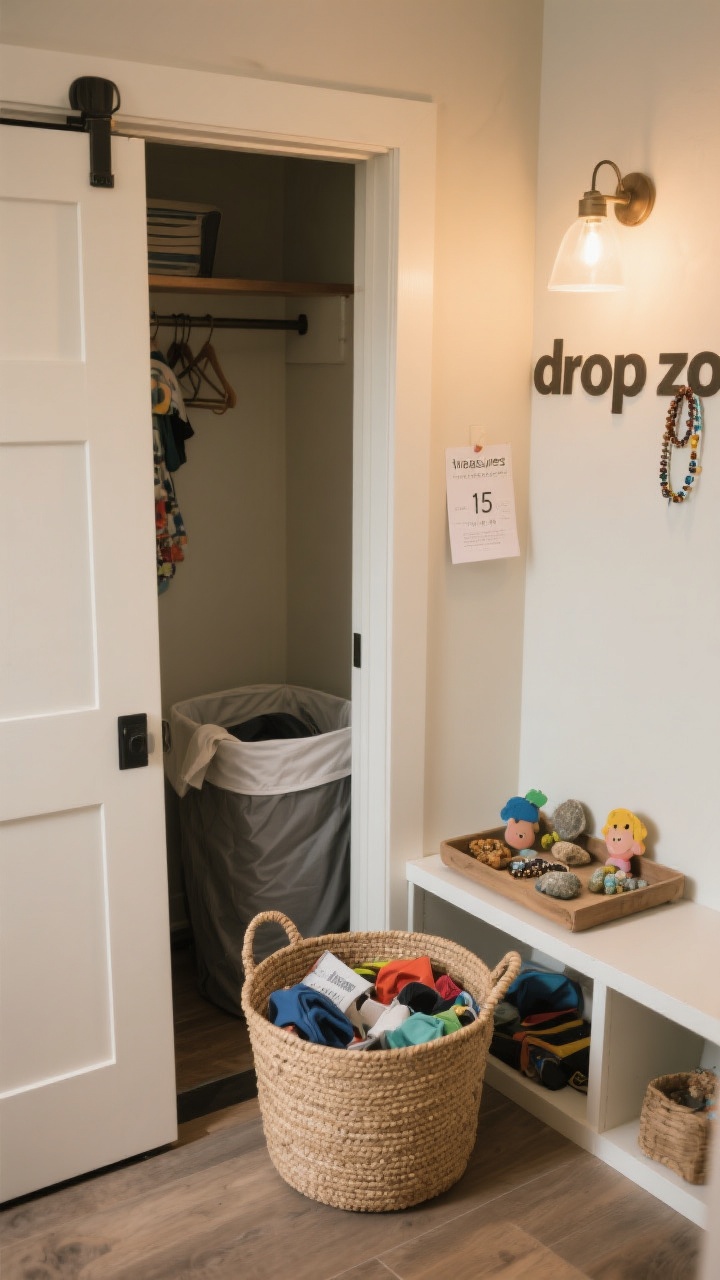
Kids will throw things on the floor. Plan for it. Add a drop bin near the door of the closet (or a wide, shallow basket) for the stuff they toss when they’re over it.
- Set a 15-minute reset once a week to sort the drop zone back into place.
- Keep a laundry hamper inside the closet so dirties don’t migrate.
- Use a small tray for treasures: rocks, bracelets, and the 47th friendship ring.
Is it perfect? No. Is it realistic? Absolutely—and that’s how systems actually stick.
11. Make It Cute: Color, Lighting, and Little Wins
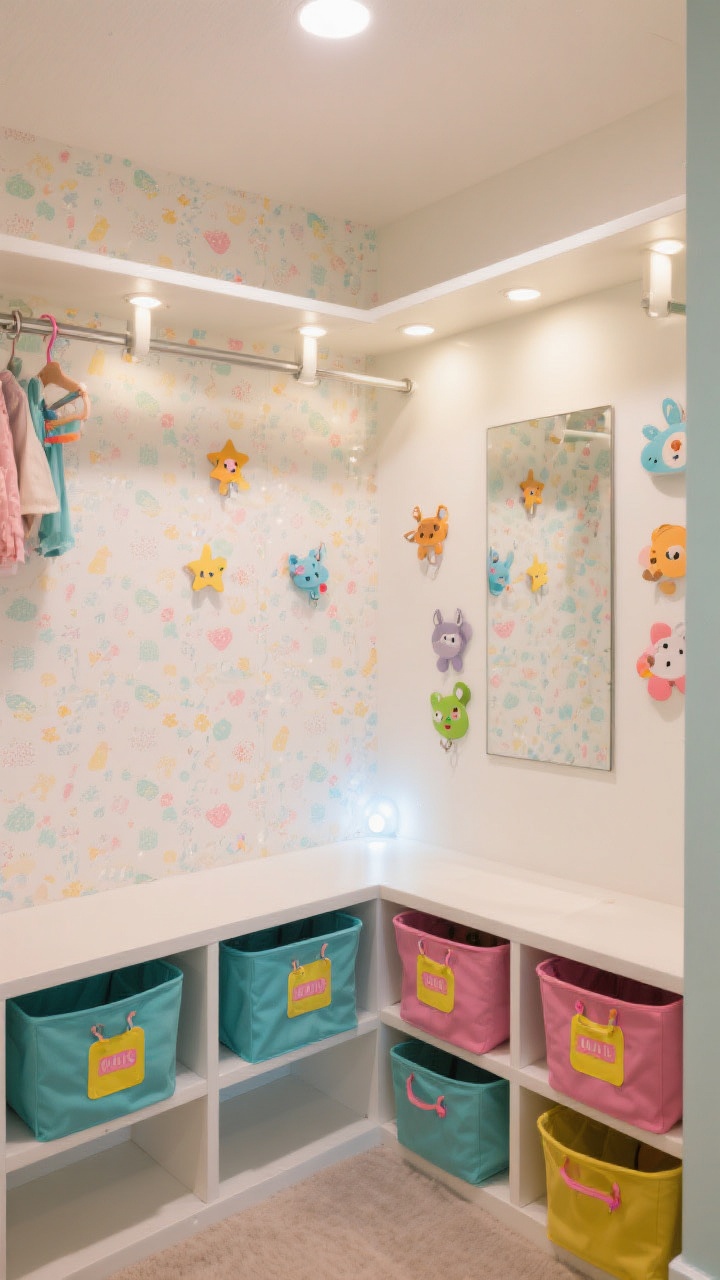
Function first, but vibes matter—especially for kids. When the closet looks fun, they’re more likely to use it. Add LED puck lights, a pop of peel-and-stick wallpaper, and a color theme they love.
Small upgrades that feel big
- LED motion lights so they can see without yelling for you.
- Matching bins with bright labels for a playful, pulled-together look.
- Adhesive hooks shaped like animals or stars—form meets fun.
- A mirror at kid height to encourage independence (and dramatic dress-up).
Make it a space they’re proud of. If they love it, they’ll maintain it. Mostly. No promises on Tuesdays.
Bonus Tips To Keep It Tidy (Without Becoming a Closet Cop)
- One in, one out: when a new hoodie comes in, an old one leaves.
- Laundry loop: keep a small stain stick and mesh bag on a hook inside the closet.
- Sunday reset: five minutes to refill the weekly outfits and clear the drop zone. Done.
There you go—11 kids closet organization ideas that are cute, practical, and actually doable. Start with one or two changes, then layer more as you go. Before you know it, your kid’s closet will go from “close the door and run” to “hey, this works.” And yes, you can take all the credit.
